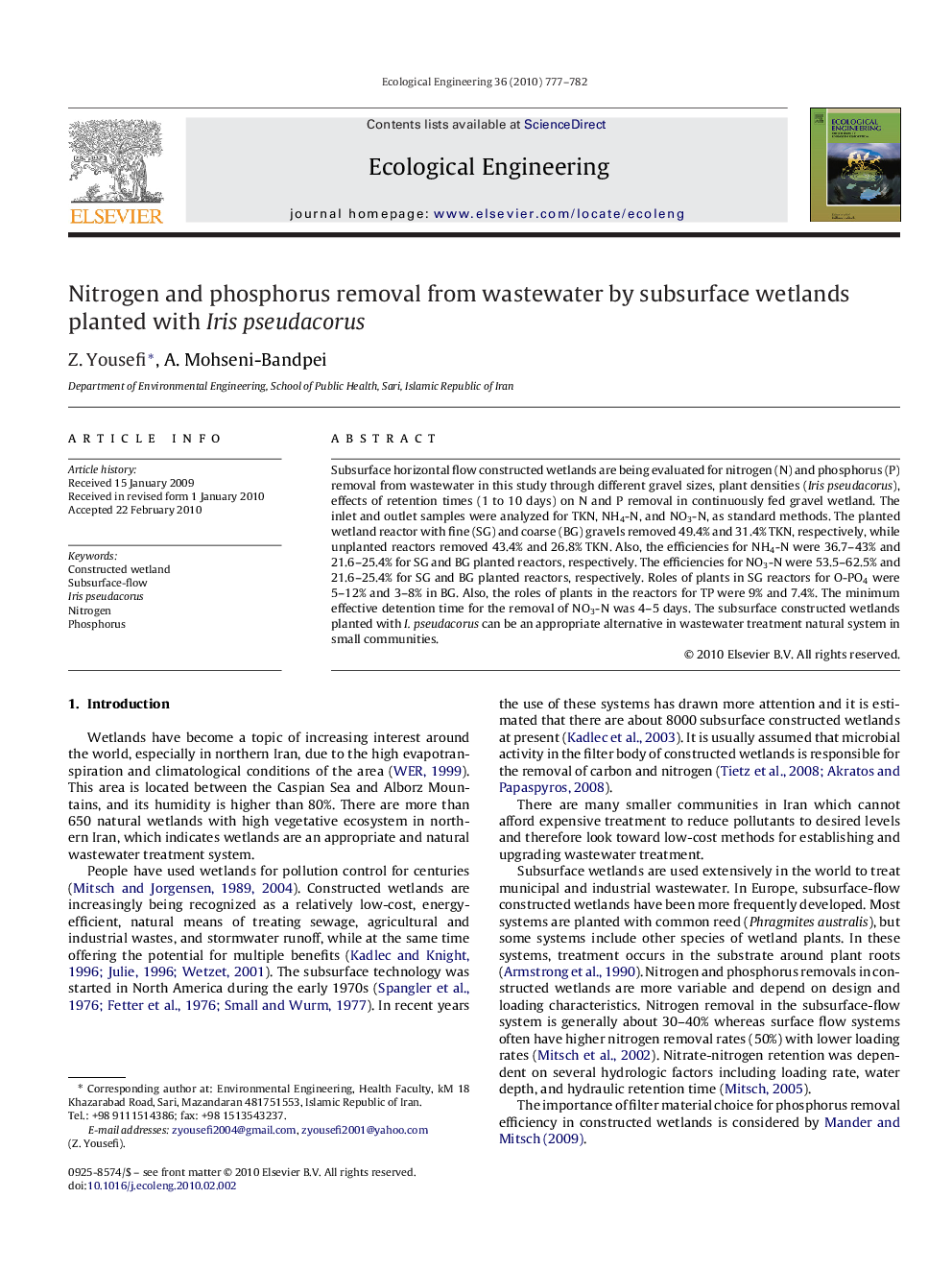| Article ID | Journal | Published Year | Pages | File Type |
|---|---|---|---|---|
| 4390552 | Ecological Engineering | 2010 | 6 Pages |
Subsurface horizontal flow constructed wetlands are being evaluated for nitrogen (N) and phosphorus (P) removal from wastewater in this study through different gravel sizes, plant densities (Iris pseudacorus), effects of retention times (1 to 10 days) on N and P removal in continuously fed gravel wetland. The inlet and outlet samples were analyzed for TKN, NH4-N, and NO3-N, as standard methods. The planted wetland reactor with fine (SG) and coarse (BG) gravels removed 49.4% and 31.4% TKN, respectively, while unplanted reactors removed 43.4% and 26.8% TKN. Also, the efficiencies for NH4-N were 36.7–43% and 21.6–25.4% for SG and BG planted reactors, respectively. The efficiencies for NO3-N were 53.5–62.5% and 21.6–25.4% for SG and BG planted reactors, respectively. Roles of plants in SG reactors for O-PO4 were 5–12% and 3–8% in BG. Also, the roles of plants in the reactors for TP were 9% and 7.4%. The minimum effective detention time for the removal of NO3-N was 4–5 days. The subsurface constructed wetlands planted with I. pseudacorus can be an appropriate alternative in wastewater treatment natural system in small communities.
